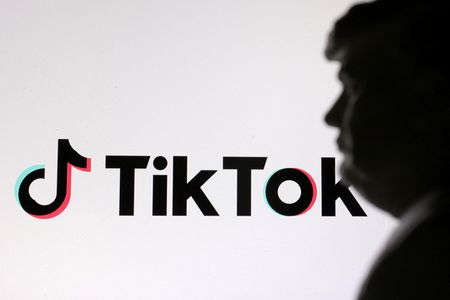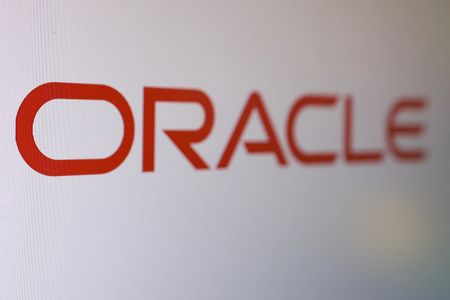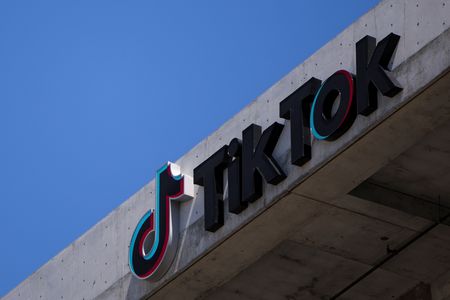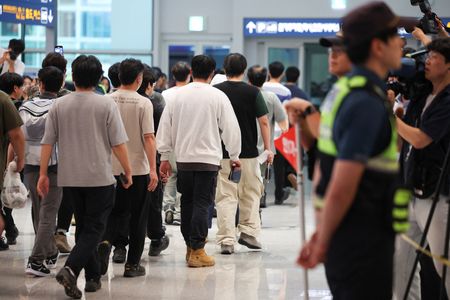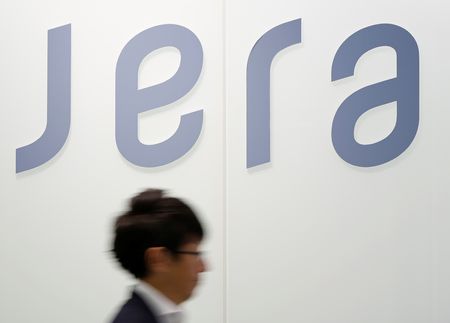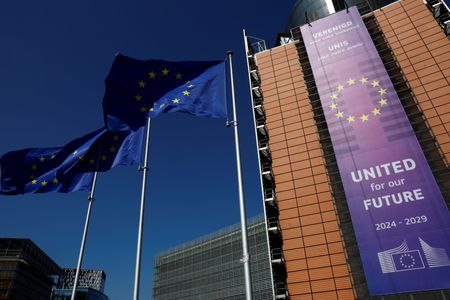(Reuters) -President Donald Trump said on Tuesday that the U.S. and China have a deal that would keep TikTok operating in the United States, in an agreement that marks a breakthrough in months-long talks between the world’s two biggest economies.
Trump later on Tuesday signed an executive order delaying the enforcement of a 2024 law requiring the divestiture of Chinese ownership of TikTok until December 16.
The deal would involve transferring U.S. assets of the popular social media app, which counts 170 million U.S. users, from its Chinese parent company ByteDance to U.S. owners.
With TikTok, ByteDance became the first Chinese company to achieve global success with a consumer app, inviting growing scrutiny from overseas governments, especially Washington, amid fears that its U.S. user data could be accessed by the Chinese government, allowing Beijing to spy on Americans or conduct influence operations through the app.
Here is a timeline of TikTok’s rise to global prominence and into the crosshairs of the Trump administration.
2012 – Zhang Yiming founds ByteDance in Beijing.
2016 – ByteDance launches Douyin, the Chinese version of TikTok.
2017 – TikTok is launched. ByteDance acquires U.S. video app Flipgram and lip-syncing app Musical.ly.
2018 – ByteDance integrates Musical.ly into TikTok. Indonesian authorities ban TikTok for containing “pornography, inappropriate content and blasphemy.” The ban is lifted a week later, after TikTok agrees to remove “all negative content” from the app and open an office in Indonesia.
February 2019 – ByteDance agrees to pay a $5.7 million fine to the U.S. Federal Trade Commission over Musical.ly’s illegal collection of personal information from minors.
March 2019 – TikTok surpasses 1 billion downloads globally on Apple’s App Store and Google Play.
April 2019 – A court in the southern Indian state of Tamil Nadu asks the Indian federal government to ban downloads of TikTok, which it said encouraged pornography. A temporary ban lasts for two weeks.
Late 2019 – The Committee on Foreign Investment in the United States begins reviewing TikTok’s purchase of Musical.ly.
April 2020 – TikTok hits 2 billion downloads globally.
May 2020 – TikTok appoints former Walt Disney streaming chief Kevin Mayer as its CEO.
June 10, 2020 – European Union regulators begin to scrutinize TikTok’s practices after the Netherlands’ data protection commission decided to open an investigation into the company’s policies to protect children’s data.
June 29, 2020 – TikTok and dozens of other Chinese apps are banned by India with the government citing security concerns. The ban came after a deadly border conflict between India and China earlier that month.
July 7, 2020 – Trump suggests a TikTok ban could be deployed to punish China for the outbreak of the coronavirus.
July 29, 2020 – Lawmakers from Japan’s ruling Liberal Democratic Party decide to urge the government to take steps to limit the use of TikTok, concerned that user data may end up in the hands of the Chinese government, public broadcaster NHK reports.
July 31, 2020 – Trump tells reporters he plans to ban TikTok in the U.S. within 24 hours.
August 2, 2020 – Microsoft announces it is exploring a purchase of TikTok’s U.S., Canadian, Australian and New Zealand services.
August 4, 2020 – Australia has found no evidence showing it should restrict TikTok, the country’s Prime Minister Scott Morrison says.
August 6, 2020 – President Trump issues executive order banning transactions with TikTok and ByteDance, starting in 45 days. The president also issues an executive order prohibiting transactions with another Chinese social media app, WeChat.
August 8, 2020 – Sources say Twitter has held preliminary negotiations about a potential acquisition of TikTok’s U.S. operations, although insiders regard its bid as long-shot.
August 12, 2020 – ByteDance is in talks with India’s Reliance for an investment in TikTok.
August 13, 2020 – Two Republican senators send a letter to the Federal Trade Commission asking for an investigation of TikTok’s data collection.
August 14, 2020 – President Trump orders ByteDance to divest its interest in TikTok’s U.S. operations within 90 days. September 14, 2020 – ByteDance picks Oracle over Microsoft as its partner in a bid to keep TikTok operating in the United States.
September 18, 2020 – Trump administration says it will ban WeChat and TikTok from U.S. app stores from September 21.
November 2020 – ByteDance challenges Trump’s order to divest TikTok, and is granted extensions.
January 27, 2021 – ByteDance to cut its 2,000-plus India team.
February 2, 2021 – Douyin sues Tencent for monopolistic behaviour, intensifying an ongoing feud between the two.
March 11, 2021 – Pakistan blocks TikTok again, lifting curbs on April 16.
March 22, 2021 – ByteDance agrees to buy Moonton, in a deal that sources say values the gaming studio at around $4 billion. A few weeks later it buys C4games.
March 24, 2021 – ByteDance hires Xiaomi executive Shouzi Chew for newly-created chief finance officer role.
April 30, 2021 – TikTok says Shouzi Chew will be its new CEO.
March 2, 2022 – Eight states, including California and Massachusetts, launch a probe into whether TikTok causes physical or mental health harm to young people.
December 20, 2022 – U.S. moves to ban TikTok on government devices.
February 23, 2023 – The European Commission and the EU Council ban TikTok from staff phones for cybersecurity reasons.
February 27, 2023 – Canada announces a ban on the use of TikTok on government mobile devices.
February 28, 2023 – The European Parliament bans TikTok from staff phones, following the European Commission and the EU Council.
March 23, 2023 – TikTok’s CEO Chew testifies before Congress; over five hours of testimony, Chew repeatedly denies the app shares data or has connections with the Chinese Communist Party.
TikTok says it has spent more than $1.5 billion on data security efforts under the name “Project Texas,” which is contracted with Oracle to store TikTok’s U.S. user data.
May 17, 2023 – Montana becomes first U.S. state to ban TikTok.
May 25, 2023 – TikTok in early stages of exploring chatbot “Tako” in the Philippines, to help find entertaining and inspiring content.
March 14, 2024 – U.S. House of Representatives passes a bill that would give ByteDance about six months to divest TikTok’s U.S. assets, or face a ban.
April 24, 2024 – President Joe Biden signs law giving ByteDance until January 19, 2025, to sell TikTok; failure would lead to its ban from U.S. app stores and from “internet hosting services” that support it.
May 7, 2024 – TikTok and ByteDance sue in U.S. federal court seeking to block Biden’s law that would force TikTok’s divestiture.
August 2, 2024 – The U.S. Justice Department files a lawsuit against TikTok and ByteDance for failing to protect children’s privacy on the social media app.
October 8, 2024 – TikTok faces new lawsuits filed by 13 U.S. states and the District of Columbia, accusing the popular social media platform of harming and failing to protect young people.
December 6, 2024 – A U.S. federal appeals court upholds the law requiring ByteDance to divest TikTok in the U.S. by January 2025 or face a ban.
January 10, 2025 – The Supreme Court seems inclined to uphold the law.
January 18, 2025 – TikTok stops working for users in the United States late on Saturday, disappears from Apple and Google app stores before the law shutting it down on national security grounds took effect on Sunday.
January 19, 2025 – TikTok says it is restoring service after then President-elect Donald Trump said he would revive the app’s access in the U.S. when he returns to power on Monday. Deadline extended to early April.
March 21, 2025 – White House-led talks on the future of TikTok coalesce around a plan for the biggest non-Chinese investors in ByteDance to up their stakes and acquire TikTok’s U.S. operations.
April 4, 2025 – President Donald Trump extends deadline for the sale of ByteDance’s U.S. assets of TikTok.
May 4, 2025 – Trump says he will extend the June 19 deadline for TikTok’s sale.
June 19, 2025 – Trump extends June 19 sale deadline by 90 days to September 17, for the third time.
June 29, 2025 – Trump says he has found a buyer for TikTok, which he describes as a group of “very wealthy people,” in a Fox News interview.
July 9, 2025 – TikTok is preparing to launch a standalone app for U.S. users that is expected to operate on a separate algorithm and data system from its global app, Reuters reports.
July 18, 2025 – Private equity giant Blackstone has withdrawn from a consortium seeking to invest in TikTok’s U.S. operations, Reuters reports; it had planned to take a minority stake.
August 19, 2025 – The White House launches its official TikTok account. September 14, 2025 – U.S. and Chinese officials meet in Madrid to hash over longstanding trade irritants and TikTok’s looming divestiture deadline.
September 15, 2025 – U.S. and Chinese officials reach a framework agreement to switch TikTok to U.S.-controlled ownership that will be confirmed in a Friday call between U.S. President Donald Trump and Chinese President Xi Jinping.
September 16, 2025 – Trump says the U.S. and China have a deal that will keep TikTok operating and that the U.S. will announce a buyer.
The U.S. extends deadline to sell Chinese ownership of TikTok to December 16.
(Reporting by Juby Babu in Mexico City; Zaheer Kachwala and Arpan Varghese in Bengaluru; Editing by Alan Barona)

